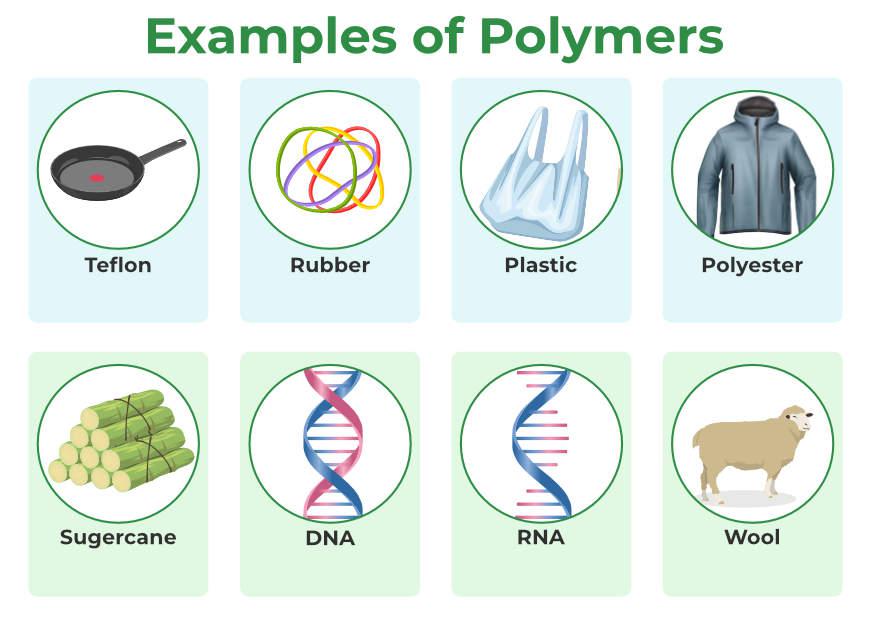Understanding Polymers: The Scientific Research Behind Versatile Materials
Understanding Polymers: The Scientific Research Behind Versatile Materials
Blog Article
Optimizing the Prospective of Polymers: Discover the Multifaceted Advantages and Practical Makes Use Of
In the substantial landscape of material scientific research, polymers attract attention as flexible substances that have penetrated almost every element of contemporary life. Their application extends different industries, from production and construction to medical care and technology. The complex advantages and functional uses polymers proceed to evolve, supplying innovative remedies to complex challenges. By discovering how polymers can improve item toughness, drive sustainability initiatives, reinvent healthcare options, and lead the way for future technological innovations, we can uncover a globe of opportunities waiting to be taken advantage of.
Relevance of Polymers in Modern Industries
Polymers play a critical role in contemporary markets, working as functional products that drive innovation and effectiveness across a wide variety of markets. These intricate particles, made up of duplicated subunits, have actually changed industries such as automobile, aerospace, electronics, healthcare, and much more. In the automobile industry, polymers have enabled the development of light-weight yet sturdy parts, boosting gas effectiveness and general performance. Aerospace sectors count on polymers for their high strength-to-weight proportion, vital for airplane and spacecraft building. The electronics industry advantages from the shielding homes of polymers, essential for making circuit boards and digital gadgets (Polymers). Furthermore, polymers are extensively made use of in the health care field for medicine distribution systems, clinical devices, and biocompatible materials. Their adaptability, sturdiness, and cost-effectiveness make polymers important in modern production processes, fostering innovations and driving development in various sectors worldwide. Accepting the potential of polymers is key to opening additional innovations and resolving the developing needs these days's commercial landscape.
Enhancing Item Resilience With Polymers
With a concentrate on long life and resilience, integrating sophisticated polymer modern technologies into product style has actually become a cornerstone of improving durability in modern-day production processes. Polymers offer a large array of homes that add to the total durability of items. One vital advantage is their resistance to corrosion, chemicals, and weathering, making them optimal for usage in different markets where direct exposure to rough problems is usual.
In addition, polymers can be tailored to satisfy details durability requirements, allowing manufacturers to personalize items according to their planned usage and anticipated life expectancy. By integrating polymers right into product elements, makers can enhance stamina and impact resistance, minimizing the chance of breakage or use with time.
Additionally, polymers are lightweight yet strong, supplying toughness without including unnecessary weight to products. This characteristic is specifically valuable in sectors her response such as aerospace and vehicle, where lightweight materials are important for improving fuel performance and general performance.
Sustainability Advancements Via Polymer Advancement
In the realm of modern manufacturing and item style, the ingenious application of polymers is driving significant innovations in sustainability methods. Polymer innovation plays a crucial duty in improving sustainability by offering remedies that minimize environmental influence across numerous industries. One vital facet where polymers succeed is look at more info in enabling the development of lightweight yet durable products that add to sustain efficiency in transport and reduce total energy usage. Additionally, the recyclability and biodegradability of specific polymers better promote sustainable techniques by minimizing waste and contamination.
In addition, advancements in polymer innovation have actually brought about the creation of bio-based and sustainable polymers, stemmed from natural sources such as plants, that provide a more lasting choice to traditional read the full info here petroleum-based plastics. These environment-friendly polymers not just help in reducing dependence on nonrenewable fuel sources but likewise reduce greenhouse gas exhausts throughout production. By integrating these innovative polymers into manufacturing processes, business can decrease their environmental impact and relocate in the direction of even more lasting techniques, aligning with global initiatives to battle environment modification and advertise a round economic situation.
Polymers in Healthcare: Revolutionizing Medical Solutions

Among the essential locations where polymers are making substantial strides remains in the growth of targeted medication delivery systems. By enveloping medicines within polymeric nanoparticles or micelles, researchers can boost medicine stability, improve bioavailability, and make it possible for controlled release, bring about a lot more efficient therapy routines with minimized side impacts.
Moreover, polymers are crucial in the area of regenerative medicine, where they are made use of to create scaffolds that resemble the extracellular matrix, supplying assistance for cell growth and tissue regrowth. This innovation holds enormous promise for fixing harmed body organs, promoting injury recovery, and advancing personalized medicine strategies.
In essence, the combination of polymers in healthcare is driving development, improving therapy effectiveness, and eventually enhancing client outcomes in ways formerly thought unattainable.
Future Applications and Innovations in Polymer Modern Technology
Advancing at the center of clinical discovery, polymer technology proceeds to lead the method for groundbreaking applications and developments shaping varied markets. Furthermore, polymer nanocomposites are enhancing the mechanical and thermal residential properties of materials, leading to stronger and lighter parts in aerospace and auto markets. Looking ahead, scientists are checking out the potential of shape-memory polymers for applications in robotics and biomedical tools, where materials that can "remember" and return to their original shapes supply interesting possibilities for technology.
Final Thought

Report this page